|
 Re: Compass
#25731
03/01/11 11:28 PM Re: Compass
#25731
03/01/11 11:28 PM
|
Joined: May 2010
Posts: 946
D L Bahler
 OP
OP
Member
|
OP

Member
Joined: May 2010
Posts: 946 |
I am going to make a 'practice' pair or two out of some 2x4's, just to work out all of the joints and mechanics, and then make some good heavy duty ones out of some nice wood, likely hickory or ash because I have some stock in those, although I could use Osage Orange since I have some split stock in that laying around plenty seasoned. It is super tough stuff, and I wouldn't be worried about it breaking or wearing out!
I was thinking about using pole barn spikes with the heads shaped to fit up against grooves to keep the points from sliding down, with a pin above to keep them from pushing up, and secured to the wooden legs with fence staples. The pin above should be removable so that the points can be removed and changed. This would make them easier to work on if they get deformed, and also allow you to have multiple sets for different uses -sharp points for marking off hard surfaces, rounded points for use on soft ground or grass.
I am undecided whether the retaining arcs should use the friction stop method or be secured at their adjustment with a screw. The friction method would be harder to execute properly
Will, do you have some pictures of your 2' pairs? I would like to see especially how you handled the pivot joint at top.
For this I was thinking of having the wood especially thick near the top, with half laps cut out so that the legs overlap each other and run more or less even with each other. The other possibility is to have a third piece at the top with the legs joined to it independent of each other. This would need some kind of retaining mechanism to ensure that the legs would always be moving together at the same rate, rather than one leg pivoting.
The other possibility is to use a rounded bridle joint at this point, which would be the hardest option to cut out of 1 piece but likely the sturdiest in operation.
the interface between the two pieces is the most complex part, they need to be able to come together at the points, which will either require some complex cutting and reductions at the joint, or making the legs with a double curve to them.
Or I could do like it appears the two compasses pictured are done.
The legs appear to attach independently to a circular handle at the top with pivoting joints of some sort.
Last edited by D L Bahler; 03/01/11 11:38 PM.
|
|
|
 Re: Compass
#25739
03/02/11 01:39 AM Re: Compass
#25739
03/02/11 01:39 AM
|
Joined: Nov 2003
Posts: 687
Gabel

Member
|

Member
Joined: Nov 2003
Posts: 687 |
DL,
The challenge (with making any tool I suppose) is not necessarily to make a tool that functions as needed, or even that will look good while it does it, but to make a tool that feels good in the hand.
I don't have any specific input, but I can imagine you want to avoid any design feature that would keep the dividers from being balanced in the hand.
They need to be nice and wieldy. That's what makes a tool a great tool.
|
|
|
 Re: Compass
#25741
03/02/11 01:53 AM Re: Compass
#25741
03/02/11 01:53 AM
|
Joined: Dec 2007
Posts: 1,882
TIMBEAL

Member
|

Member
Joined: Dec 2007
Posts: 1,882 |
Ash, One piece, necked down at the middle into a thin band, steamed or boiled, and bent into the shape of the dividers. The legs could be nicely shaped and lightened up, light and wieldy. I think you have the pins worked out. The locking mechanism?
Do they need to close completely? I suppose it depends on how thin the middle band is and if the legs need to come completely together.
|
|
|
 Re: Compass
#25746
03/02/11 03:48 AM Re: Compass
#25746
03/02/11 03:48 AM
|
Joined: May 2010
Posts: 946
D L Bahler
 OP
OP
Member
|
OP

Member
Joined: May 2010
Posts: 946 |
On the topic of making comfortable tools, that's why I am studying the images from medieval manuscripts and trying to replicate them, rather than reinvent the wheel.
the locking mechanism is in the supporting arcs, you can't trust a lock in the hinge with arms this long
|
|
|
 Re: Compass
#25750
03/02/11 04:40 PM Re: Compass
#25750
03/02/11 04:40 PM
|
Joined: Mar 2002
Posts: 1,687
Jim Rogers

Member
|

Member
Joined: Mar 2002
Posts: 1,687 |
DL: Here are some pictures of the wooden set I have: 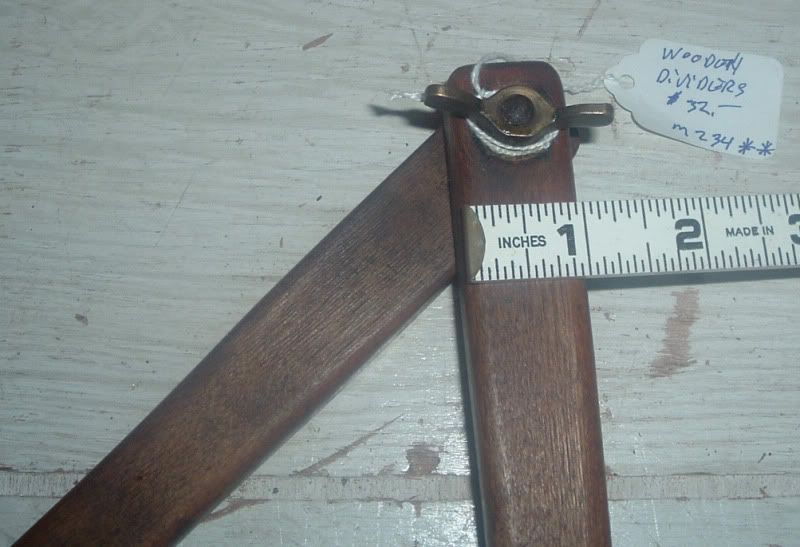  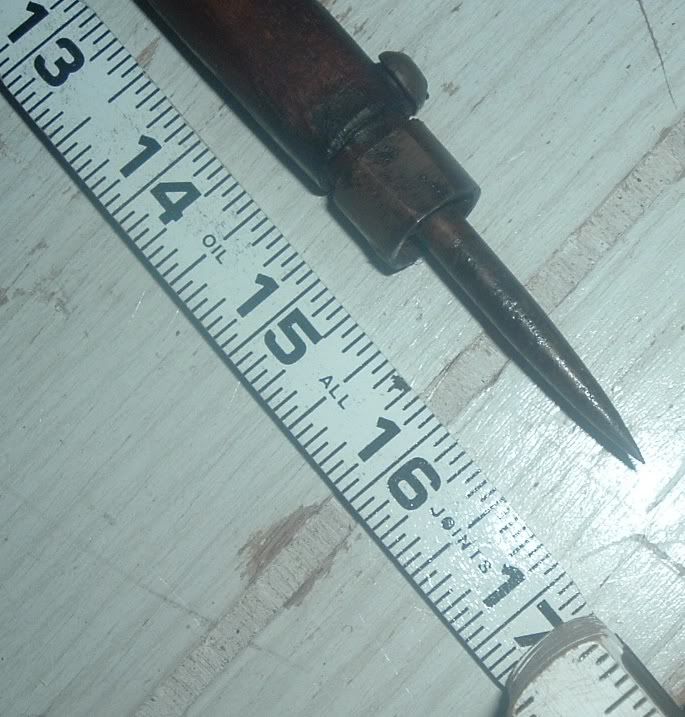 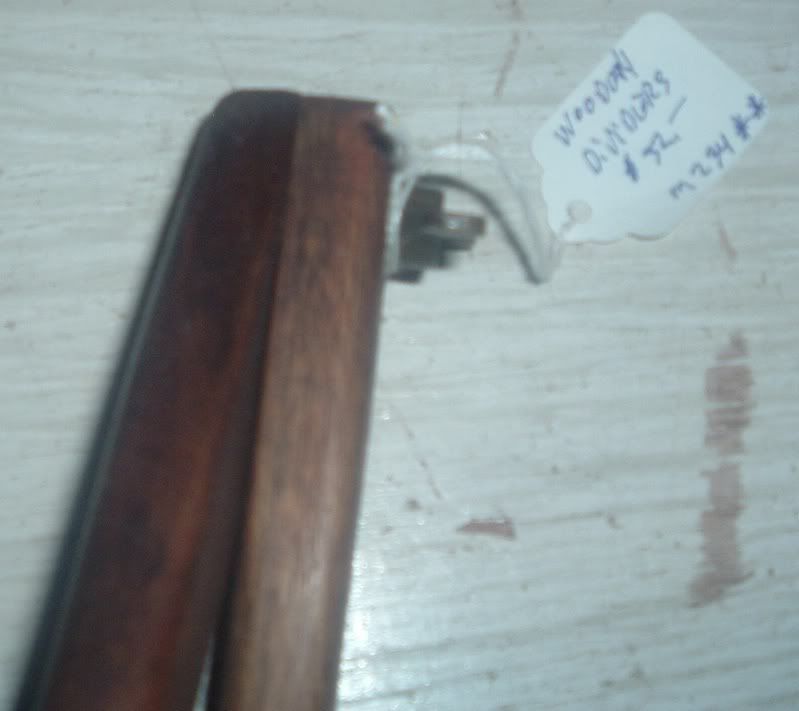 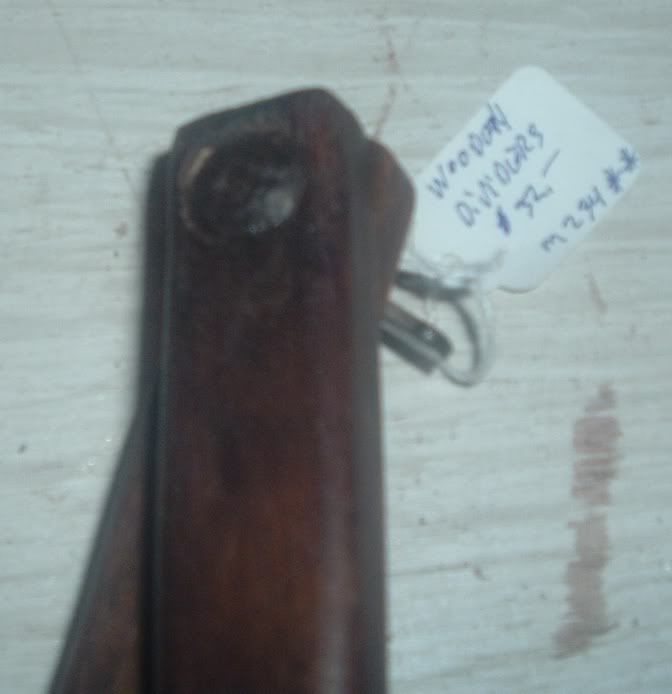 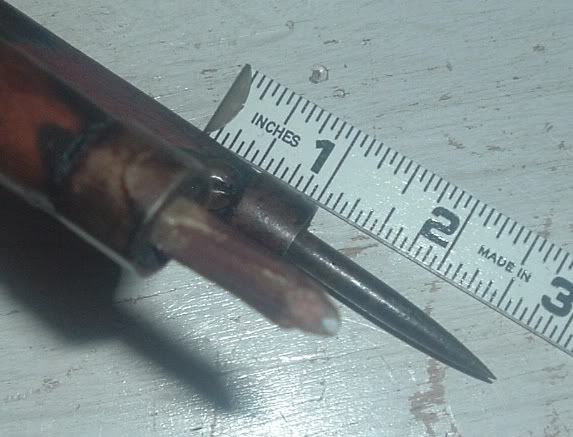 If you need any measurements let me know. Jim Rogers
Whatever you do, have fun doing it!
|
|
|
 Re: Compass
#25752
03/02/11 07:31 PM Re: Compass
#25752
03/02/11 07:31 PM
|
Joined: Dec 2007
Posts: 1,882
TIMBEAL

Member
|

Member
Joined: Dec 2007
Posts: 1,882 |
Jim, what does the locking mechanism look like?
|
|
|
 Re: Compass
#25753
03/02/11 10:03 PM Re: Compass
#25753
03/02/11 10:03 PM
|
Joined: Mar 2002
Posts: 1,687
Jim Rogers

Member
|

Member
Joined: Mar 2002
Posts: 1,687 |
Wing nut at the top is all there is....
Whatever you do, have fun doing it!
|
|
|
 Re: Compass
#25754
03/02/11 10:51 PM Re: Compass
#25754
03/02/11 10:51 PM
|
Joined: May 2010
Posts: 946
D L Bahler
 OP
OP
Member
|
OP

Member
Joined: May 2010
Posts: 946 |
how well does the wing nut at the top hold 2' arms at a precise adjustment? Even God uses a compass  I found these interesting as well, an improved version of the drawing compass, the unique design of the legs helps them to hold their adjustment when they are opened widely, and the design of the top portion allows for a sturdy and comfortable one-handed grip. I might make myself a pair of these and see how they work. Recreation based on a carving from an architect's tomb.  Both of these pictures are from this page, http://medievalarchitecturalgeometry.com/Measure%20and%20the%20medieval%20architect.htm, which I would highly recommend to anyone interested in the medieval practice.  see the compass in the bottom right corner. Note the use of the term compass instead of dividers. In the middle ages the tool was always called a compass, and it should be called thus whenever it is being used as a drawing tool. The tern dividers came about in the Renaissance when the tool lost its drafting purpose, and was used as a means of dividing (by guess and check) a certain space into equally sized portions. Since we here are not using the tool for dividing, but rather for drawing and measuring, we should call them compasses.
Last edited by D L Bahler; 03/02/11 10:59 PM.
|
|
|
 Re: Compass
#25765
03/03/11 03:57 PM Re: Compass
#25765
03/03/11 03:57 PM
|
Joined: Mar 2002
Posts: 1,687
Jim Rogers

Member
|

Member
Joined: Mar 2002
Posts: 1,687 |
D.L. I don't want to start a debate over the correct term/name. You can call them what you like. However, it was my understanding from my research that a compass or a "pair of compasses" were when a pencil or pen is attached for drawing on paper or other materials. When the pencil is removed and the leg is refitted with another spike, the tool is then called a "dividing compass" or a "set of dividers" or a shorten name "dividers" . I site as my research this page I found: http://encyclopedia.thefreedictionary.com/DividersAnd this text: Dividers
A dividers, also known as a measuring compass, is a mathematical, drafting or cartographic instrument used to aid measurements of the length of irregular lines and of distances on maps or charts. It is commonly used in geometry and in nautical navigation. It is similar in appearance to a drafting compass, the difference being that the compass has a spike on one end and a pencil (or other drawing utensil) on the other which allows the drawing of circles, whereas the dividers has spikes on both ends. Often a compass can be fitted with a spike in place of the drawing utensil and thus converted to dividers.Which I found by researching the name compass. And this text from the same dictionary: Compass (drafting)
In some medieval illustrations, the compass was used as a symbol of God's act of creation
A compass or pair of compasses is a technical drawing instrument that can be used for inscribing circles or arcs. As dividers, they can also be used as a tool to measure distances, in particular on maps. Compasses can be used for mathematics, drafting, navigation, and other purposes.
Compasses are usually made of metal, and consist of two parts connected by a hinge which can be adjusted. Typically one part has a spike at its end, and the other part a pencil, or sometimes a pen. Circles can be made by fastening one leg of the compasses into the paper with the spike, putting the pencil on the paper, and moving the pencil around while keeping the hinge on the same angle. The radius of the circle can be adjusted by changing the angle of the hinge.
Distances can be measured on a map using compasses with two spikes, also called a dividing compass. The hinge is set in such a way that the distance between the spikes on the map represents a certain distance in reality, and by measuring how many times the compasses fit between two points on the map the distance between those points can be calculated.All of the pictures you have shown, do not show a pencil; most likely as it hadn't been invented, yet, and it may true that the name was changed at the time of the Renaissance, in reality what you are trying to construct, in my opinion, would be a "dividing compass".
Whatever you do, have fun doing it!
|
|
|
 Re: Compass
#25769
03/03/11 06:53 PM Re: Compass
#25769
03/03/11 06:53 PM
|
Joined: May 2010
Posts: 946
D L Bahler
 OP
OP
Member
|
OP

Member
Joined: May 2010
Posts: 946 |
No debate intended, just thought a bit of history would be interesting, as the use of the term 'dividers' came about only after the purpose of the tool had changed. To me it seems odd to call the tool 'dividers' if you aren't using them to divide anything. The name 'compass' implies the marking of circles or the swinging of arcs, or earlier simply the use in measurement.
The images do actually show a pencil, just not in the way you might expect it. The architect's compass was pointed with fine silver, which is used as a rubbing drawing point much like lead or graphite. On a properly prepared surface, silver point is erasable.
Today the tool is still most often used for dividing distances into equal parts, rather than as a tool of measurement. As such it is rightly called dividers. But when used solely for geometric drawing and measurement, I submit that the term compass is a superior term. But I admit that may be more because I am somewhat of a medievalist than for any other reason.
I have no issue with people calling their tools what they want, I just thought perhaps I should explain why I am calling it a compass instead of dividers!
I see no need to establish rigid standards of nomenclature, I think it is a good thing for something to have multiple titles. I am no fan of over-standardization. Shakespeare, I have heard, never spelled his name the same way twice...
|
|
|
|
|